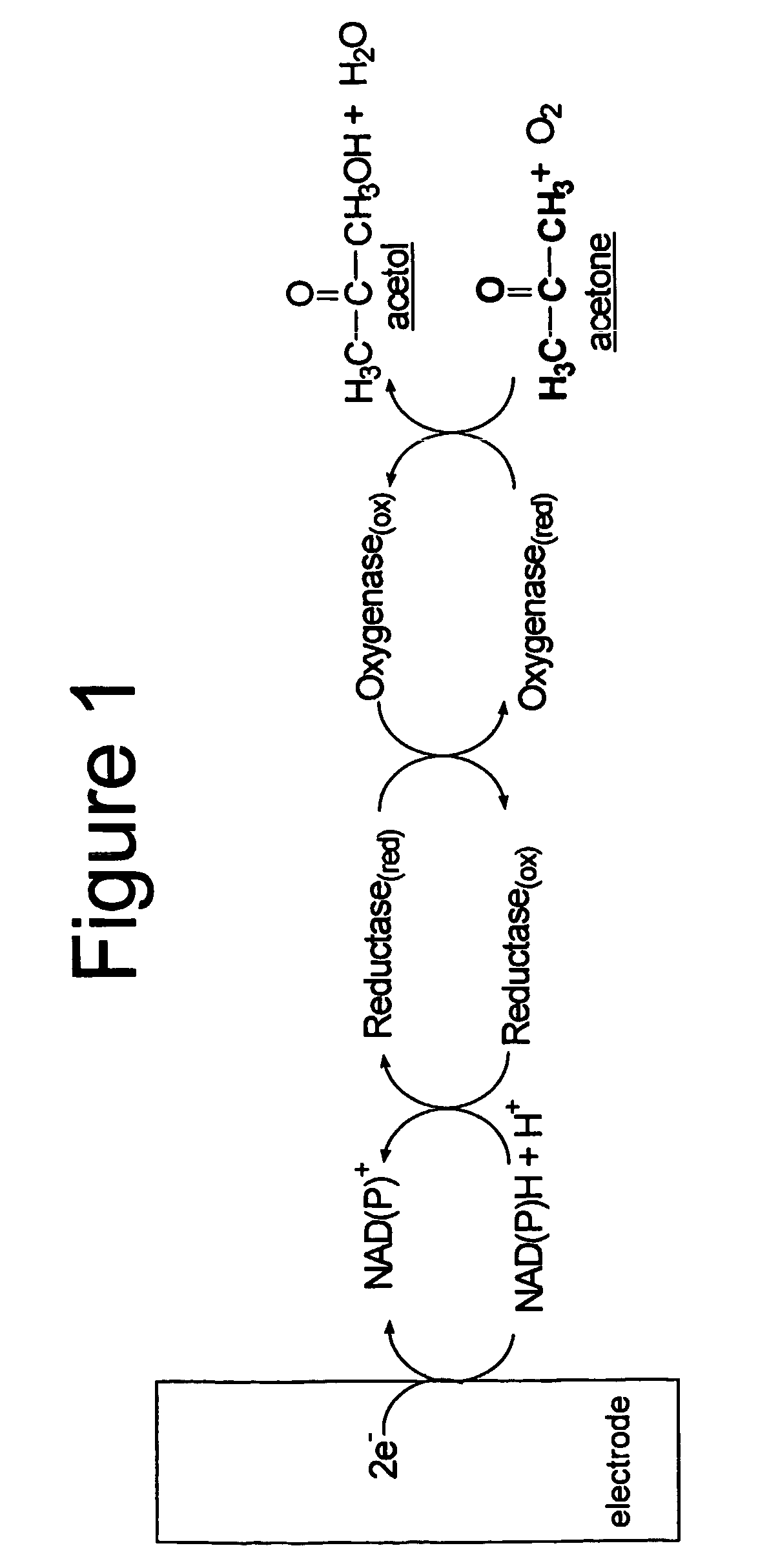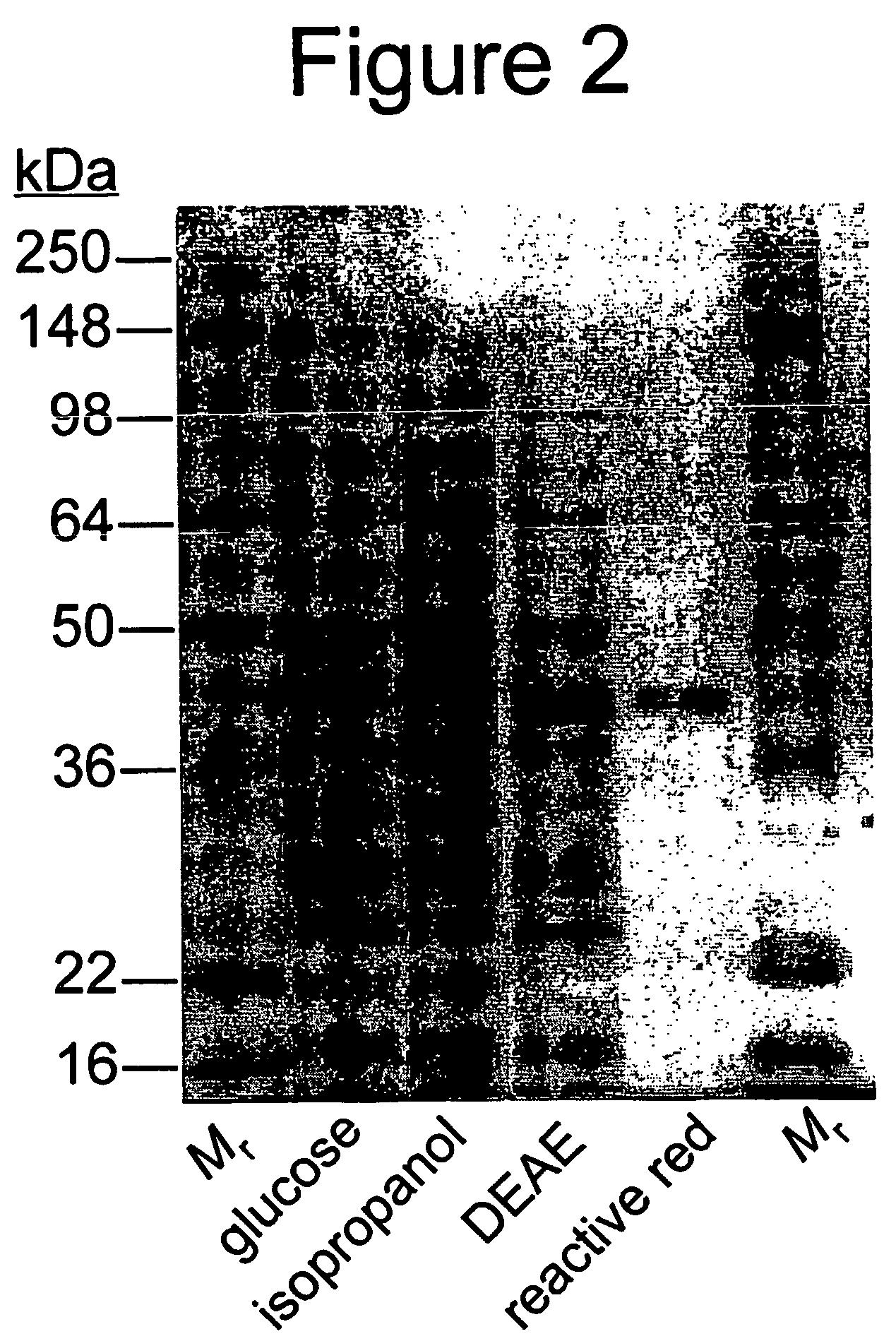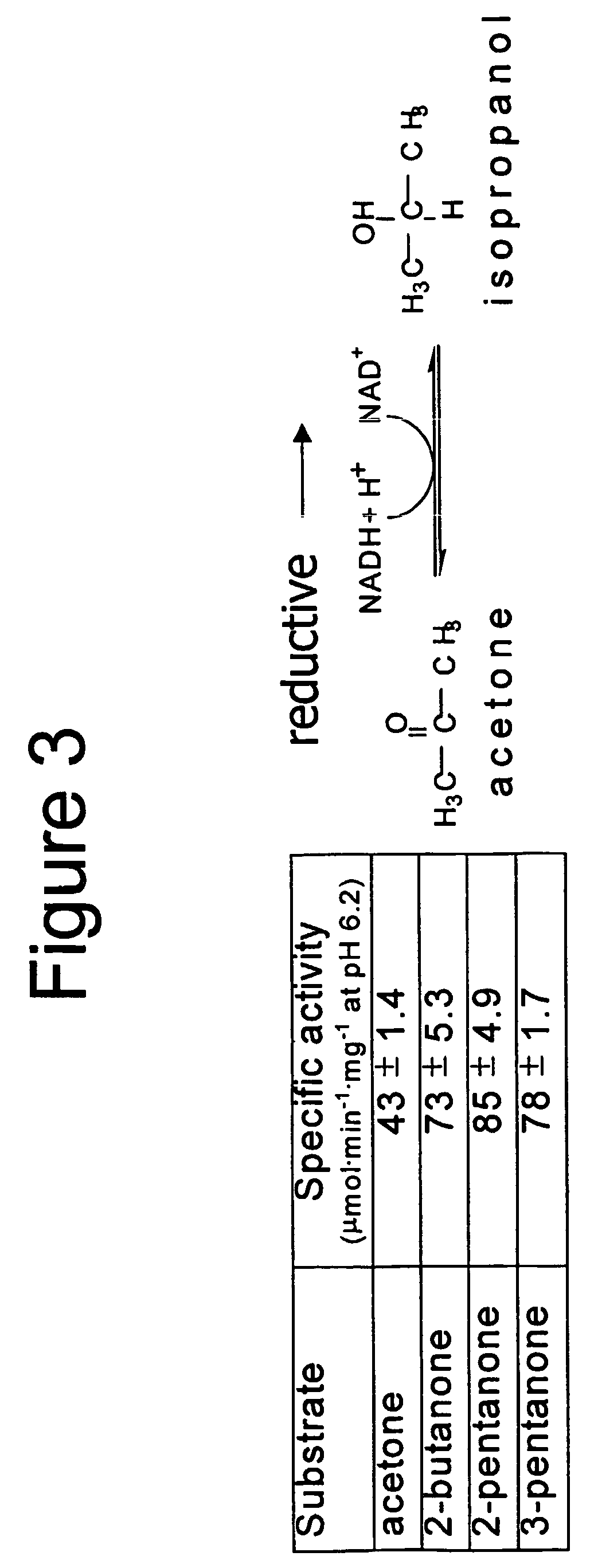Enzyme-based system and sensor for measuring acetone
a technology of acetone and enzymes, applied in the field of acetone detection, can solve the problems of inability to conduct regular subject self-monitoring, and the general availability of acetone-specific detection technologies outside the laboratory or clinic setting, and achieve the effect of low cost and convenient transportation
- Summary
- Abstract
- Description
- Claims
- Application Information
AI Technical Summary
Benefits of technology
Problems solved by technology
Method used
Image
Examples
example 1
Acetone Carboxylase Coupled to NADH Oxidation Spectrophotometric Assay
[0191]Assays were performed in 2 mL (1 cm path length) quartz cuvettes that had been modified by fusing a serum bottle-style quartz top (7×13 mm at mouth), allowing the cuvettes to be sealed with a red rubber serum stopper. The reaction mix contained ATP (10 mM), MgCl2 (11 mM), potassium acetate (80 mM), MOPS (100 MM), CO2 (50 mM (1 mol CO2 (g) to 4 mol potassium bicarbonate to maintain pH)), and 20 to 40 μg purified acetone carboxylase in a total volume of 1 mL at pH 7.6. The addition of P-hydroxybutyrate dehydrogenase (3 U) and NADH (0.2 mM) allowed acetoacetate formation to be coupled to the oxidation of NADH. Assays were pre-incubated for 2 min. at 30° C. with all assay components except acetone. Assays were initiated by addition of acetone (2 mM). The reaction was monitored by measuring the decrease in absorbance at 340 nm (∈340 of 6.22 mM−·cm−1 for NADH) over time in an Agilent Technologies (Palo Alto, Calif...
example 2
Secondary Alcohol Dehydrogenase NADH Oxidation Spectrophotometric Assay
[0193]Assays were performed in 2 mL quartz cuvettes and contained NAD(H) (0.2 mM), potassium phosphate buffer (25 mM), and a source of enzyme (cell-free extracts, column fractions, or purified enzyme) in a total reaction volume of 1 mL at pH 6.2 (for ketone reduction assays) or pH 7.8 (for alcohol oxidation assays) at 30° C. Assays were pre-incubated for 1.5 min. at 30° C. with all assay components except substrate. Assays were initiated by addition of substrate (2.5 mM) and monitored over time by measuring the change in absorbance at 340 nm (∈340 of 6.22 mM−1·cm−1 for NADH).
[0194]Secondary Alcohol Dehydrogenase Coupled to H2O2 Formation Spectrophotometric Assay.
[0195]Assays were performed in 2 mL (1 cm path length) quartz cuvettes and contained potassium phosphate (50 mM), 1.5 pg purified S-ADH, NADH (50 μM), lactate (10 mM), lactate dehydrogenase (20 U), pyruvate oxidase (2 U), peroxidase (15 U), flavin adenine...
example 3
Initial Electrochemical Measurement of NADH and Correlation to Spectrophotometric Data
[0209]10 micron disc carbon fiber microelectrodes were purchased (from Bioanalytical Systems (“BAS”), West Lafayette, Ind. (part number MF-2007)) and pretreated using the method of Kuhr et. al. (63). The electrode surface was polished for 10 min. with 1 μm diamond paste (Bioanalytical Systems) and sonicated in hot toluene for 2 min. To remove residual polishing material, the microelectrode was rinsed once in methanol and once in water, then sonicated twice in water for 1 min. The polished microelectrode was subsequently pretreated electrochemically in 1 M HCl by twice applying 10 cycles of 100 V / s from −200 mV to +1800 mV. Then the microelectrode was treated in 100 mM potassium phosphate buffer by twice applying 10 cycles of 0 to +1200 mV at 100 mV / s. Background scans were then obtained from phosphate buffer alone. All potentials were referenced versus a Ag / AgCl reference electrode (Bioanalytical S...
PUM
| Property | Measurement | Unit |
|---|---|---|
| pH | aaaaa | aaaaa |
| molecular mass | aaaaa | aaaaa |
| angle | aaaaa | aaaaa |
Abstract
Description
Claims
Application Information
 Login to View More
Login to View More - R&D
- Intellectual Property
- Life Sciences
- Materials
- Tech Scout
- Unparalleled Data Quality
- Higher Quality Content
- 60% Fewer Hallucinations
Browse by: Latest US Patents, China's latest patents, Technical Efficacy Thesaurus, Application Domain, Technology Topic, Popular Technical Reports.
© 2025 PatSnap. All rights reserved.Legal|Privacy policy|Modern Slavery Act Transparency Statement|Sitemap|About US| Contact US: help@patsnap.com



